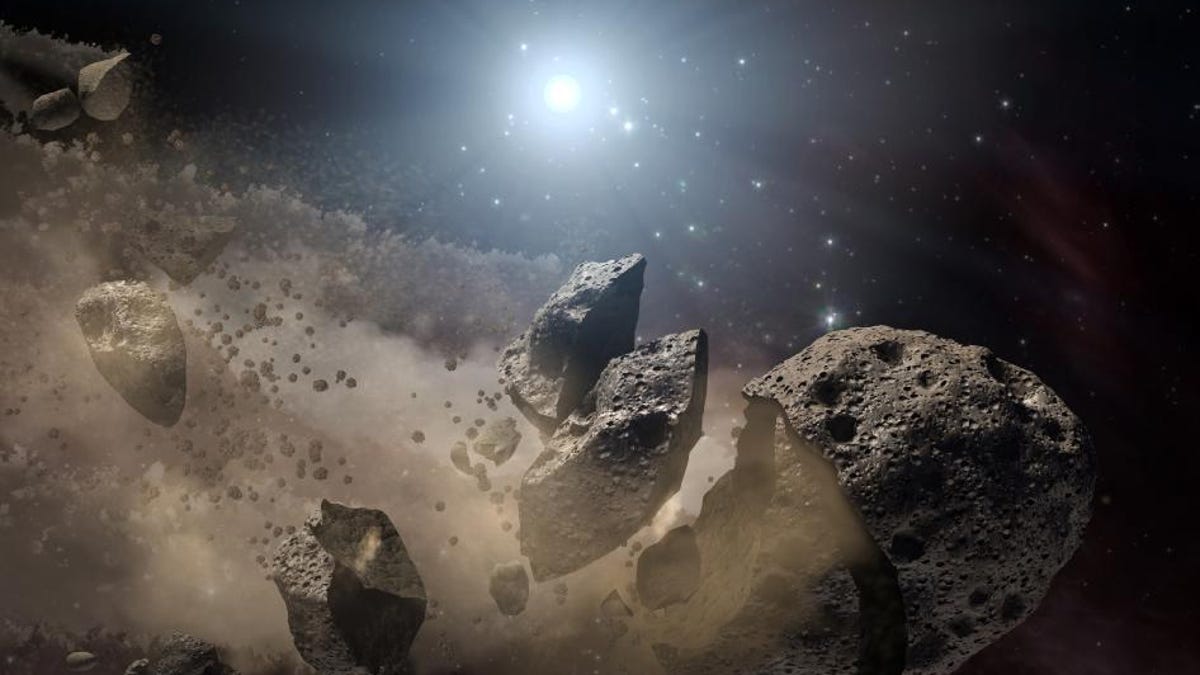Space-launched missiles are the best protection from asteroids, astronomer says
Planetary protection starts beyond the planet.

Deflecting asteroids could be a job best done off planet.
An Italian astronomer says the best defense against potential killer asteroids from space is solid offense, also based in space.
The notion of protecting the planet from menacing space rocks by blasting them with missiles is an old trope of science and disaster fiction, but Claudio Maccone has been arguing for decades now that where those missiles are launched from matters.
Maccone, both an astronomer and a mathematician, first worked out in 2002 the basics of how missiles stationed at Earth-moon Lagrange points -- spots in space where the gravity of the Earth and moon effectively cancel each other out, allowing spacecraft to remain relatively stationary -- could be used to deflect asteroids.
In a paper uploaded to the Arxiv preprint server this week, Maccone further refines the math underlying the system and expands on the concept to allow for automatically blasting off a series of missiles to ensure a threatening asteroid is definitely deflected (or completely obliterated).
"A sufficient number of missiles could thus be launched in a sequence from the Earth-Moon Lagrangian points L1 and L3 with the result that the SUM of all these small and repeated deflections will finally throw the NEO off its collision hyperbola with the Earth," Maccone writes.
Maccone has applied for a patent for the software that models such space-fired missile deflections, but he notes that there's still more work to be done:
"Many engineering details about the missiles shot from L1 and L3, however, still have to be implemented into our simulations, partly because they are classified."
So until all that minutiae is finally worked out, we could still be forced to rely on a Bruce Willis-like hero to manually detonate a bomb on any future killer asteroid, Armageddon-style (cue the Aerosmith...).
Follow CNET's 2021 Space Calendar to stay up to date with all the latest space news this year. You can even add it to your own Google Calendar.

